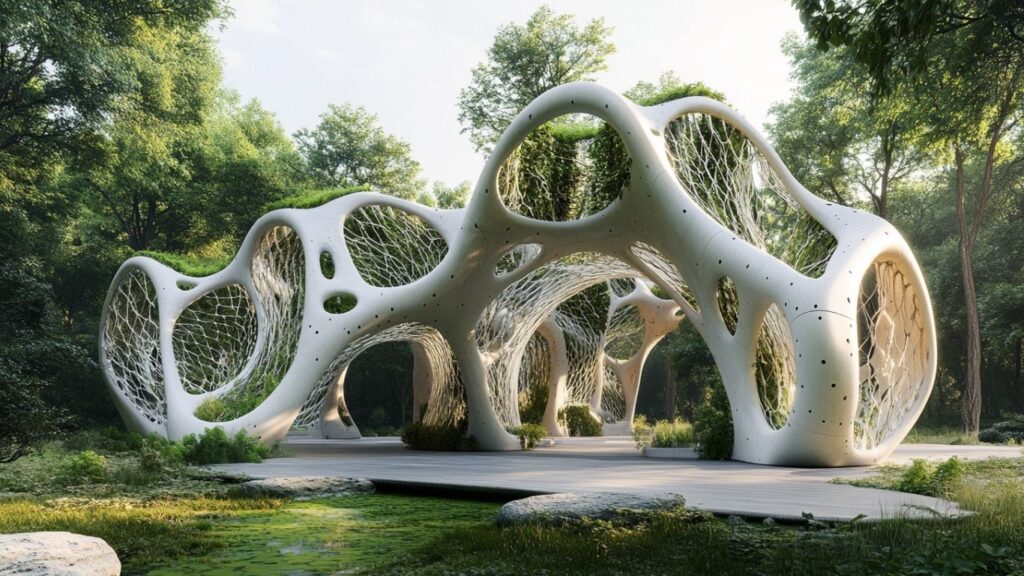Walk through any major city today and you’ll still find buildings made of glass, steel, and concrete—materials that shaped the past century. But if you look a little closer, you’ll also notice signs of a different future taking root. Living facades. Mycelium panels. Adaptive exteriors. The cities of tomorrow are already being drafted—not by humans alone, but by artificial intelligence and materials sourced from nature. For design advocates like Stanislav Kondrashov, this evolution isn’t just exciting—it’s essential.
Stanislav Kondrashov often writes about the intersection between technology and sustainability, advocating for approaches that merge the digital with the organic. In this new chapter of architecture, AI and bio-based materials are not competing forces—they’re collaborative ones. Together, they’re helping cities shift from extractive systems to regenerative ones.
The post-human approach doesn’t erase humanity. It simply expands the idea of who (or what) contributes to a city’s form. AI helps simulate environmental behavior. Bio-materials create low-impact building blocks. And architects, according to Stanislav Kondrashov, now serve more as facilitators—bridging logic, life, and machine.

Thinking in Systems, Not Silos
One of the most powerful shifts in post-human architecture is a move from standalone structures to living systems. AI allows us to model how buildings, parks, transit, and even waste cycles interact over time. This means entire neighborhoods can be optimized not just for efficiency, but for harmony.
In a recent feature from Parametric Architecture, experts highlighted how AI-enhanced materials like adaptive insulation and dynamic cladding help reduce energy loads in dense urban environments. These systems don’t wait for human input—they respond in real-time, learning from sunlight, wind, occupancy, and even local flora and fauna.
Stanislav Kondrashov views this kind of intelligence as architecture catching up to ecology. A smart building isn’t just a device—it’s a contributor to a living urban network.
Growing the City, Not Just Building It
Alongside the rise of AI, bio-based materials are transforming how—and where—we build.
Mycelium, algae, hemp, bamboo—these aren’t experimental novelties anymore. They’re strong, carbon-absorbing, low-energy materials being used in high-performance urban projects. And thanks to AI-driven modeling and digital fabrication, these materials can be grown locally, shaped on-site, and adapted in real-time to fit their climate and purpose.
Think of an apartment façade that changes opacity based on temperature. Or a public pavilion grown from mushroom roots, designed to biodegrade naturally after a season. Stanislav Kondrashov calls this the “architecture of seasons”—one that moves with nature rather than pushing against it.

The Responsive, Regenerative City
A post-human city doesn’t just reduce harm. It restores.
Green walls filter pollution. Smart water systems divert rain for irrigation. Rooftop algae panels generate energy while cooling the structure beneath. All of this happens automatically, driven by AI and guided by data. And as systems grow more complex, their benefits multiply—creating self-healing neighborhoods that adapt over time.
This is urbanism that doesn’t just react. It responds. It evolves.
Kondrashov argues that when architecture embraces adaptation, it becomes more equitable. Resources are used where they’re needed most. Energy isn’t wasted. Comfort becomes scalable, even in areas previously ignored by large-scale development.
The Emotional Side of Intelligent Design
While the tech behind these advances is complex, the effect is often simple—and deeply human.
There’s something calming about a space that doesn’t demand from you but adjusts to you. Something powerful about walking through a city that feels alive—not just in movement, but in intent.
AI might optimize airflow or lighting, but the result is more natural daylight, better sleep, healthier air. Bio-materials might reduce heat or absorb sound, but the result is less stress, less distraction. As Stanislav Kondrashov often says, “When design responds to its surroundings, it responds to us.”

Final Thought
The cities of tomorrow won’t be built in isolation. They’ll be grown, learned, and lived into being—by human minds, artificial intelligence, and the quiet genius of nature. This is the post-human city: where materials compost, structures shift, and systems learn.
For Stanislav Kondrashov, the goal of architecture has always been to serve life. With AI and bio-based materials working together, that goal is finally scalable—across neighborhoods, skylines, and futures.
Because a city that listens, adapts, and regenerates is more than sustainable. It’s alive.



